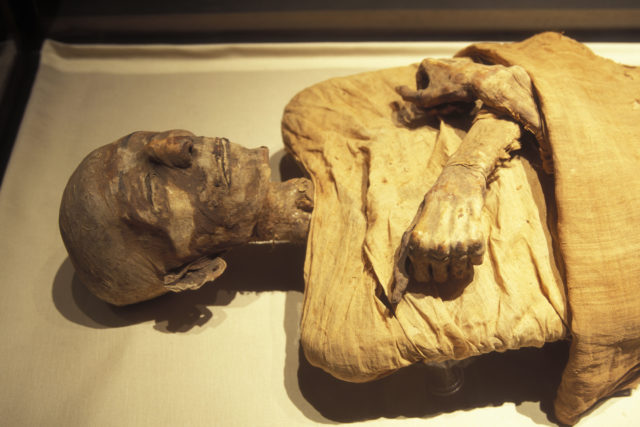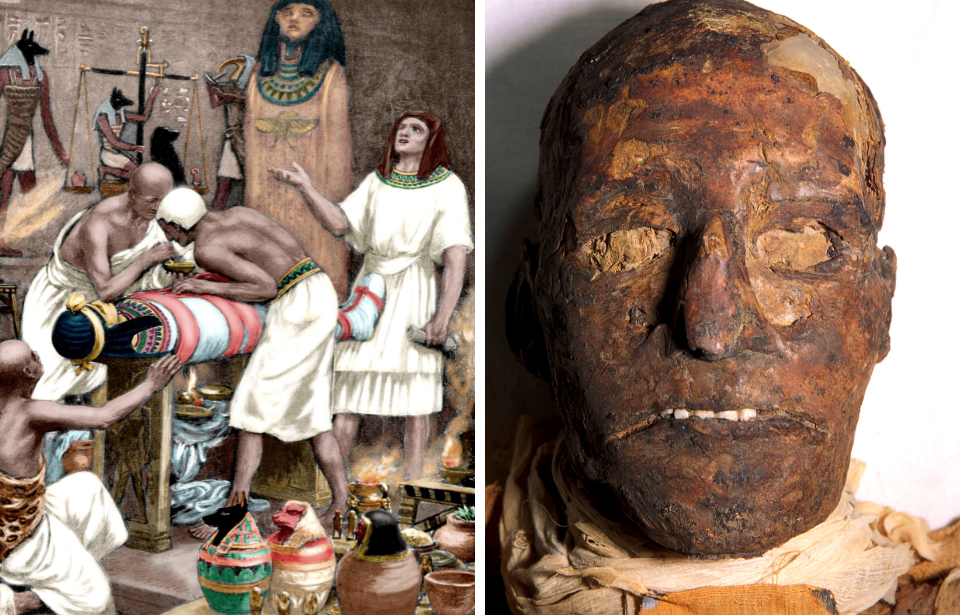One of the primary things often associated with the ancient Egyptians is the process of mummification. For the ancient Egyptians, preserving the body was the best way to ensure the continued existence of the soul in the afterlife. However, mummification was not easy and could take up to 70 days to complete. Removing internal organs, pickling the body, and wrapping the body in bandages all took skills and knowledge. A recent study has helped determine that the ancient embalmer had a far more complex understanding of the chemical effects of mummification than researchers previously believed.
Researchers discovered an ancient embalming workshop
Long-distance trade enabled ancient Egyptians to embalm the dead. https://t.co/1TiPQJggb4
— Science News (@ScienceNews) February 5, 2023
In 2016, researchers located an ancient embalming workshop in the necropolis Saqqara, best known for its wealth as an ancient burial ground. At the site, several areas are above the surface, open to discovery, but more is to be discovered underground. A shaft into the ground was discovered that stretches down into an embalming room. This is where the last phases of processing took place for many of the dead.
By inspecting the well-preserved workshop, researchers are able to piece together the processes of mummification with a lot more detail. This particular workshop dates back 2,50o years. Within it are other important pieces of ancient material that were further analyzed and reported in a study that was posted in the scientific journal, Nature. Specifically, 31 ceramic jars were found inside the workshop.
Chemical residues with inscriptions were found
Elaborate underground embalming workshop discovered at Saqqarahttps://t.co/iy8rDXauiW
— VCP Newz (@VCPNewz) February 1, 2023
The discovery of the ceramic jars has been integral to understanding the ancient mummification process, as they still contained chemical traces of the substances they once held. By analyzing the chemical residues, researchers were able to determine the types of solutions that were being used and what types of recipes were being used to preserve the dead for thousands of years.
On the jars were the ancient Egyptian inscriptions for the contents they held or for what purpose the contents served. For example, instructions such as “to wash” or “to put on his head” were found on the outside of some of the jars. “The inscribed vessels can now be connected with specific materials and mixtures of materials that were unknown before,” Susanne Beck, one of the study’s authors, said in an email to NBC News.
Inside the jars were substances such as fragrant, antiseptic, or plant oils, tars, resins, animal fat, and other things. Partnering the contents of the jars with their respective inscriptions, researchers were able to find alternative definitions for Egyptian terms such as “Antiu” and Sefet,” which appear to identify certain mixtures of ingredients in this context. “Very exotic products” such as Dammar tree resin or Elemi oil, “which are only native to rainforests in Asia and partially Africa,” were also discovered in the jars, Beck explained.
What this means for researchers

Researchers now have a deeper understanding of the mummification process. “This gives us an insight into the whole process of mummification and the logistics of it that we did not have until today,” said Salima Ikram, a professor of Egyptology American University in Cairo, who was not involved with the study.
“The fact that something that is a resin material or an oil from a plant is being traded is more interesting, because, you know, how did people know that they want this?” Ikram speculated. “Does it have properties that are unique, that other materials that could be found in the Mediterranean basin or the Horn of Africa does not possess?” She has suggested that trading materials was accompanied by a transfer of knowledge between ancient medical practitioners and chemists.
“It’s like a time machine, really,” said Joann Fletcher, an archaeologist at the University of York not involved with the study. “It’s allowed us to not quite see over the shoulders of the ancient embalmers, but probably as close as we’ll ever get.”
More from us: Painted Wooden Coffins and Bronze Statues Among Trove of Ancient Artifacts Discovered in Egypt
The discovery has also proven that the ancient Egyptians had a far more sophisticated understanding of the chemicals used during the mummification process than we originally thought. The various recipes and their purposes show a deep understanding of the chemicals’ effects on the human body.
